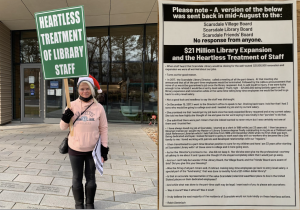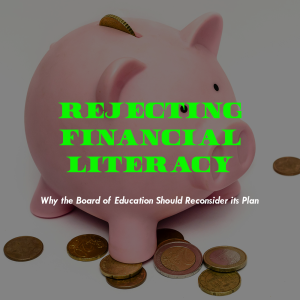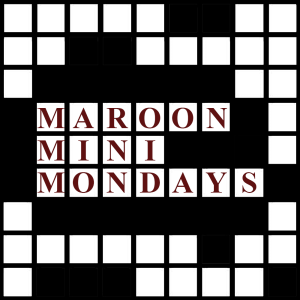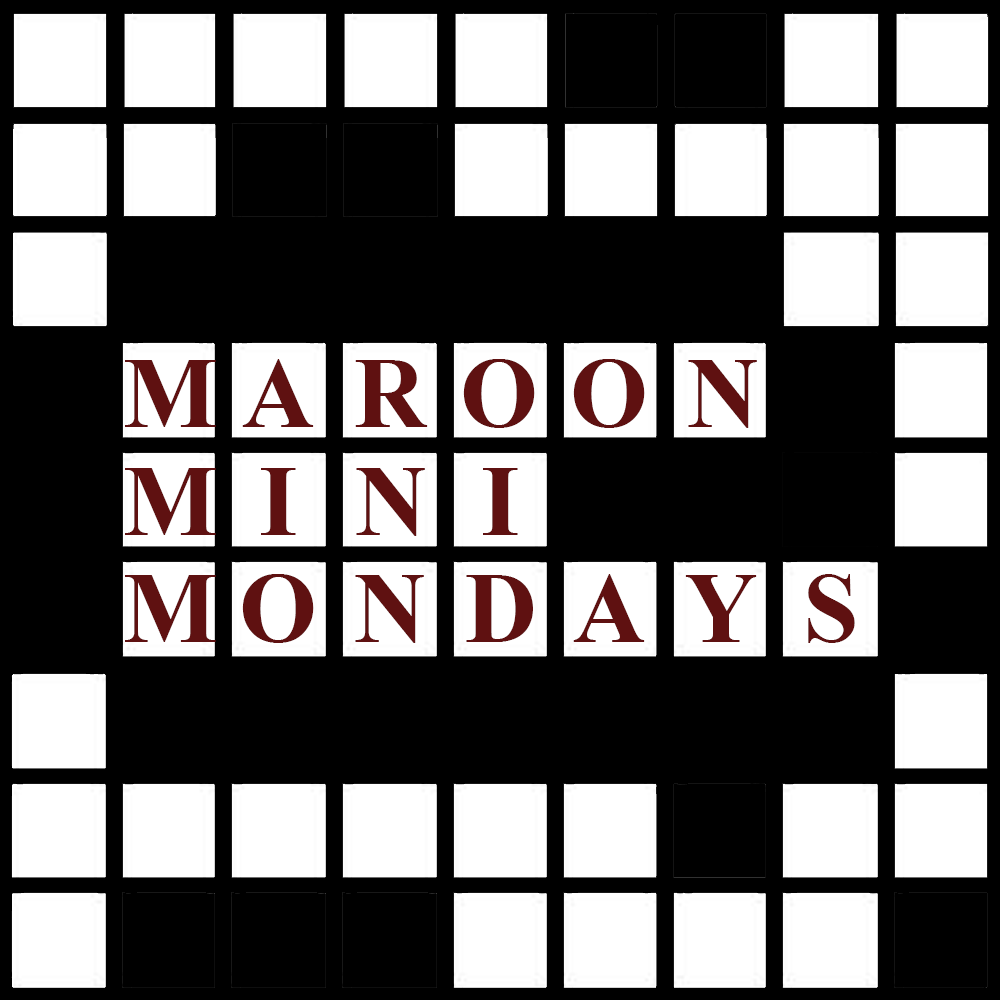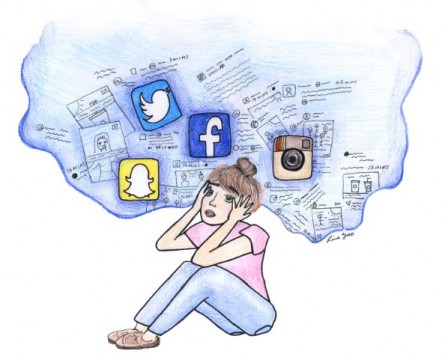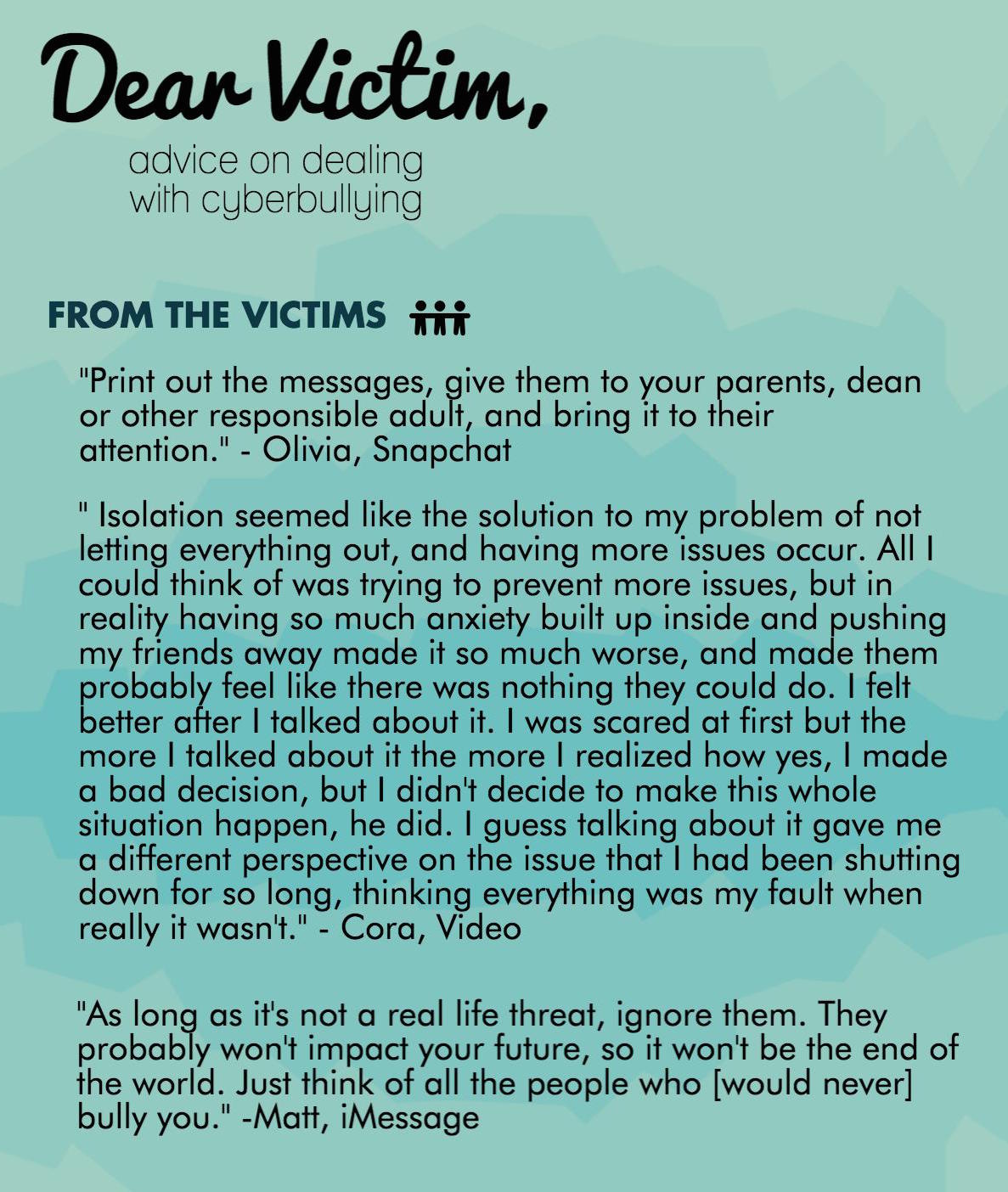Emma* stretches her legs across the black leather couch. Her fingers lie on the dusty keyboard, her eyes scan her Facebook news feed on her laptop. She is about to wish a friend a happy birthday when she hears a ring: she has received a Facebook message. “Your clothes looked disgusting today,” it reads.
She looks down at her wrinkled off-white sweater and black leggings in a pile on the wooden floor. She had spent an eternity today trying on clothes. Emma had sworn it looked perfect. This hurt. But was that truly the intention?
Cyberbullying is complicated. “Defining cyberbullying isn’t easy. Generally, you are using any form of media or electronics to harass someone, make anyone feel terrible about himself, or harm their mental health,” shared SHS health teacher Jessica Levenberg. Unlike being picked on at the playground, cyberbullying can be all-encompassing and affect more than one’s happiness at school. The federal government, on stopbullying.gov, a website created by the U.S. Department of Health & Human Services, acknowledges the presence of cyberbullying and notes that it is especially harmful because it can occur at any point throughout the day—in and out of the classroom. A bully can make their messages anonymous, tormenting victims without consequences. On the Internet, forging a name on sites like Facebook is trivial, and on many media platforms, people can go by arbitrary usernames. Messages can be broadcasted to large groups of people in a matter of seconds. Whether a bully posts on a Facebook wall or uploads a video on YouTube, attacks become public in an instant, and it is nearly impossible to remove any content from the Internet once it is posted.
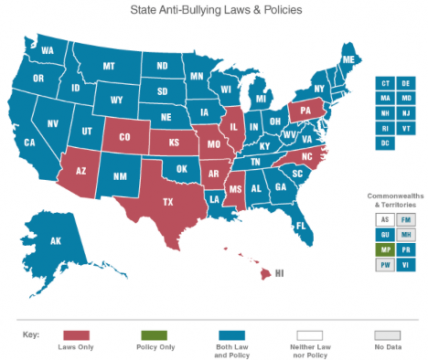
Online harassment can have devastating consequences. “It really invades their whole life. It’s nonstop… I would imagine it would disrupt their whole life in some cases,” said SHS health teacher James Tulley. In 2010, Tyler Clementi, an 18-year-old student at Rutgers University, committed suicide after a cyberbullying incident. CNN reported that two of his classmates recorded his encounter with another male student on a secret webcam and encouraged other students to watch a live broadcast. The classmates were faced with criminal charges involving Clementi’s invasion of privacy, but neither was blamed for the resulting suicide. In 2012, the story of Amanda Todd highlighted the dangers of cyberbullying. In October of 2012, she created a YouTube video detailing the harassment she faced after showing her breasts to a stranger on a webcam video. The stranger took photos of the video chat and spread them to her classmates. Only days after posting her video, Todd committed suicide. The video subsequently went viral, garnering 1,600,000 views in about three days. These have not been the only cases of suicide resulting from bullying, they represent a facet of the cyberbullying that is closely tied to suicide. A report by the CDC explained that “youth” who have reported involvement in some form of bullying were more likely to commit suicide, attempt suicide, or have suicidal thoughts than those who had not experienced bullying.
Within Scarsdale, 2015 has brought its own discussion of cyberbullying.  In early September, Jillian Stachyra ’18 chose to change her Facebook profile picture to a photoshopped image of her head on a clipart whale, named JillWhale, created by a group of boys in her grade. In doing so, she began a campaign against cyberbullying. This received a great deal of attention in the coming weeks as the Facebook page “Whale Yourself” was created, an article was written on scarsdale10583.com, and Stachyra herself made buttons with the logo. Although this incident was isolated to a single image, it has raised many questions over how students should behave online. How do we define cyberbullying? Are we responsible for our words and messages online more than we are in person? Should a victim speak out about their incident or should they keep quiet?
In early September, Jillian Stachyra ’18 chose to change her Facebook profile picture to a photoshopped image of her head on a clipart whale, named JillWhale, created by a group of boys in her grade. In doing so, she began a campaign against cyberbullying. This received a great deal of attention in the coming weeks as the Facebook page “Whale Yourself” was created, an article was written on scarsdale10583.com, and Stachyra herself made buttons with the logo. Although this incident was isolated to a single image, it has raised many questions over how students should behave online. How do we define cyberbullying? Are we responsible for our words and messages online more than we are in person? Should a victim speak out about their incident or should they keep quiet?
These questions are difficult to answer. With the increase of social media apps in the past years, incidents of cyberbullying are omnipresent and each example of harassment is unique.
Cora*, an SHS student, told her cyber bullying story. “It began when I decided to hangout with the guy I thought I was [dating]. The whole situation escalated quickly. When he said he wanted to go further, and I said no, he got really mad. He started to say things like ‘I can’t believe you are backing out after I came all the way over here’ or ‘you can’t just do this one thing for me, even though we’re together? That’s what people do when they are together’ and ‘I promise I will keep it a secret, no one will know.’ I got scared in the moment and decided to do what he asked for.” Her one act of succumbing to peer pressure, while a mistake, became an act she would soon be defined by. “When everything was happening, he video taped me. I had no idea.” In the span of one night, this video was spread to a number of Cora’s friends and many more students . “Kids in the grade above me sent me messages making fun of me or saying how they [thought] I deserved everything. [But] it wasn’t until the first day back at school [that] I realized my whole world [had been] turned upside down. Everyone hated me.” Cora spent months isolating herself from others. Her bully was applauded by fellow classmates. “I [had] never felt like that before. The feeling where you are targeted by everyone, you can’t trust anyone, and you feel so vulnerable, it’s terrifying. I [would] break down in the bathroom because walking from class to class seemed to be so hard.” Eventually, Cora reached out to an upperclassman. This person helped her recognize that the incident wasn’t her fault, allowing her to rebuild her life. In following weeks, she would tell her parents and repair friendships. Although she is a stronger person today, Cora feels she should have never had to go through such a scarring incident.
SHS student Avery* shared an account of cyberbullying. The bully was a friend from the past. “[It was] a bad experience. They were analyzing my life and confronted me over Facebook. He sent this long speech to me. He said that I used to be intelligent and now I’m turning into a joke… that sort of thing,” said Avery. Much like Avery, Taylor*, another SHS student, had an incident in which an anonymous individual confronted her through a direct message over Instagram. “They created a fake profile, and just said a bunch of degrading things about me. They [wanted me] to stay away from this person…It’s funny now, but it hurt then,” explained Taylor.
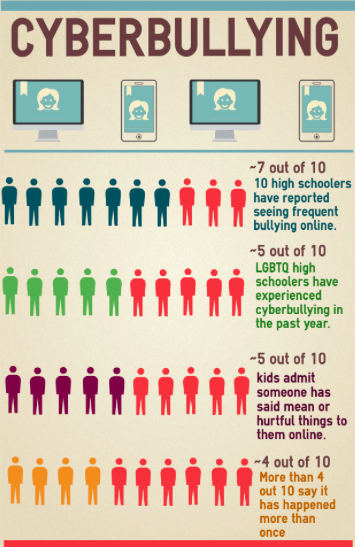
Social media can also provide a bully an opportunity to learn about and target an individual. This, in fact, is what happened to SHS student Matt*. An unknown number began sending him hurtful messages. “The anonymous texts were usually mean comments about profile information. They looked at profile pictures, age, and the “about me” section. [It was] someone trying to insult [me] without letting [me] know who they were. And the insults — there [was] usually profanity in them,” he explained. Hurt, Matt would stay home from school in hopes of avoiding the person. Although Matt was only affected by this when he got home at night, some students also must deal with cyberbullying during school hours.
Olivia*, another SHS student, told her story. “It was the day that a guy told me he didn’t have the same feelings for me that I did, so my heart was broken. On the bus ride home from a game, these freshmen girls offered to hook me up with a freshmen guy. I knew I was doing something stupid, but they pressured me into sending him a friend request on Facebook, and a week later, using their phone to send him a Snapchat of me asking him to accept it,” explained Olivia. The girls had led Olivia to believe that the boy had feelings for her in order to convince her to reach out to him. However, the girls had used her, leaving Olivia feeling both rejected and embarrassed. The number of incidents like Olivia’s involving more than one bully are especially popular now due to group messaging apps.
In the past two or so years, a large portion of cyberbullying cases have occurred through group messages on the app GroupMe. It was on this platform that the JillWhale image was created. The app is typically used to unite sports teams, camp friends, social groups, and even sizeable chunks of a grade. When used correctly, the app can be a positive way of sharing information. “With my team, they talk about the time of practice and which color uniform we have to wear…” shared one sophomore who wished not to be identified. In other cases, the group chats can be used to bully others. Even if only two or three people are directly contributing to the harassment, there are often dozens of others who remain silent bystanders.“[Cyberbullying] is not always direct… people will bring it up in group chats and group messages and bully [students] not even to their faces… I think all group chats are stupid. I’m in a bunch of group chats, and I probably shouldn’t be in them,” shared Taylor. The sophomore shared a personal experience in one of her group chats. “Even though you might be included and all—you know, they’ll mention you in a couple of comments—sometimes, when it’s a lot of girls talking about something like a party, girls won’t respond or they’ll quickly change the subject. That can be rude to others in the chat. They feel excluded,” she said.
In many of the smaller cases of reported cyberbullying, the lines of what constitutes a bully or a victim are blurred. Part of the problem is that there is no defined line between bullying and teasing. Teasing a friend online may start out as a playful joke but can turn sour in a second. For instance, a friend’s jokes can be interpreted in negative ways. It is impossible to hear inflections in tone or see facial expressions of others online. Is someone a bully if they did not intend to hurt another person? “I think that [some] people do not realize that they are cyberbullying another person,” said Levenberg. Because of this variation and confusion with cyberbullying, the staff and administration of SHS found it necessary to meet to discuss how to deal with incidents and prevent harassment from occurring.

On election day, November 3, the staff and administrators dedicated three hours to discussing the issues of bullying and harassment in SHS. For the first half-hour, assistant principal Dr. Christopher Griffin spoke about the “Dignity for All Students Act,” an anti-bullying piece of legislation from New York State’s government that took effect in July of 2012. A main point of the law requires that staff report any bullying incidents within a certain window so that they can be resolved. “I am what’s called the “Dignity for All Students Act Coordinator” in the building,” said Griffin. As the coordinator, he is in charge of receiving reports from teachers, students, and parents on cases of bullying. At the conference, Psychologist Dr. Joel Haber spoke about the broader issues surrounding bullying and harassment. He is a recognized expert in the field and works with students, teachers, and adults on preventing incidences of bullying and harassment. In this presentation, Griffin focused on cyberbullying, and asked that teachers and administrators do the same. “The world has changed pretty dramatically. You have people like me who are interacting with teenagers and trying to work with teenagers on this issue and, quite frankly, I don’t have the facility that you [students] do. I think that is fair to say of many in our faculty. It’s important for our faculty to get some education and guidance on what exactly cyberbullying looks like and how it occurs,” shared Griffin. As part of the conference the faculty broke into smaller groups to attempt to answer a variety of open ended questions and start a conversation about what they are seeing at SHS.
A large part of the three hour conference was devoted to discussing ways to prevent cyberbullying. “Sometimes [cyberbullying] has been difficult to address—it’s always complicated, I can tell you that much…My first hope is that [the staff left] with a greater sense of awareness and responsibility. They are not going to leave with all of the tools they need to address it and put an end to it. That’s just not going to happen. I think if people are simply more aware and take greater responsibility, than we are already halfway there,” shared Griffin.
Cyberbullying is not a myth; it is a frightening reality that regularly haunts SHS students. Unfortunately, it is more common than most would imagine, as many will choose never to come forward with their experiences. It remains nebulous and difficult to address, given that the line between what constitutes cyberbullying and what does not is still unclear. Even in its most minute forms, cyberbullying is an epidemic. Education is crucial to helping solve the problem. As teachers, students, and members of the Scarsdale community, it is our responsibility to talk to classmates and listen to their stories.
By Emily Kopp and Sneha Dey

